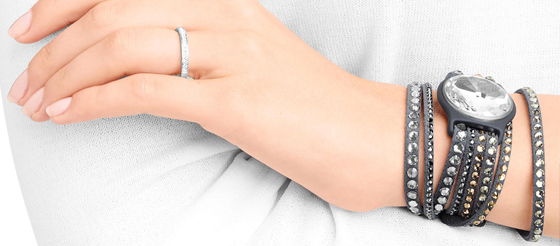You may have noticed that last week the world’s largest consumer electronics show was in full swing in Vegas: CES 2015.
While most mainstream technologies were announced, many other new technologies were flirted with in and around these announcements – technologies that will undoubtedly come to market within the decade that could change the way we live, commute and wear our technology.
The three big stories were the Internet of Things (IoT), which includes the connected home. Also announced were advances around in-car tech, with innovation nearer than you think, and also the advancement of wearables as fashion statements.
Big commitment to Internet of Things
A large proportion of Samsung’s keynote address at CES was devoted to the Internet of Things. Samsung pledged that by 2020 all of their devices would be IoT compatible, a huge step in the right direction for tech integration. Expect other brands to make this same pledge.
As we move forward, the smart home category will continue to grow, with domestic appliances, TVs and mobile devices playing a big part in connecting devices together. Brands will need to connect their devices to one another to stay relevant enabling us to connect our entire home from one human interface.
Take a look at Hive, the UK’s connected thermostat, controlling your heating and water remotely. It’s available now and an early innovator in this category.
With all this tech, you need power. Enter centre stage the Energous WattUp, winner of the Best Connected Home Product at CES, a wireless power solution that can charge wirelessly our wearables, phones and any other battery powered device in your home. Energous believe it will have the first wave of this product available by the end of the year.
Samsung’s pledge was also important because it promised ‘open’ connectivity. By opening up its devices to other brands, Samsung is leading the way in a true Internet of Things, where all devices communicate with each other, not just those of the same brands.
If other brands take up this pledge, the Internet of Things will make much more of an impact on our everyday lives by potentially connecting all devices together.
In-car tech
Automotive tech once again made headlines at CES, especially with the Audi self-driving car’s two-day, 550 mile journey from San Francisco to Las Vegas turning heads early in the week.
Self-driving innovations took centre stage for many motor brands, with self-parking cars from Hyundai and Volkswagen demonstrating how far self-driving tech has developed in the past year. Mercedes, winner in the Best Automotive Technology category at CES, showed off the F015 Luxury in Motion concept, which the company believe is possible by 2030 – in Mercedes’ words, “our vision is the car as a salon, a lounge you drift from destination to destination in like an extension of your home.”
Undoubtedly parts of this innovation will become reality soon.
The motor category is also another battleground for Apple and Google, here with their respective CarPlay and Android Auto platforms.
Both allow car users to mirror their mobile Operating Systems in their cars, giving access to GPS maps, hands-free calls, music and other apps through the car’s existing screen. Integration opens up many avenues, for example activating car features using Siri.
Whilst some believe these innovations are a further distraction to drivers diminishing passenger/pedestrian safety, cars, like our homes are inevitably becoming smarter.
Fashionable wearables
At this year’s CES we began to see the second generation of many wearable devices, including updated reveals from Sony, LG, Garmin and Fitbit. With the looming release of the unmistakably fashionable Apple Watch, many wearable makers are following suit by developing their own fashion conscious watches and trackers.
Take a look at the Tori Birch range for Fitbit which turns your wearable fitness technology into high end fashion jewellery.
Wearable maker Misfit has teamed up with Swarovski to produce the Shine, a customisable series of fitness trackers disguised at jewellery. Hidden beneath Swarovski crystals, the Shine tracks activity such as steps, swimming strokes and sleep via an accompanying app, and is also the first solar-charging wearable, reflecting sunlight through the crystals.
The Martian-developed Guess Connect looks like a normal Guess watch, but has the addition of small screen which displays caller ID and other alerts, has Bluetooth connectivity, and can interact with Siri or Google Voice commands via an inbuilt microphone in the watch.
Other offerings from watchmakers intending to join the wearable revolution are Tag Heuer and Fossil.
As predicted, these innovations suggest just how wearables will begin to blend into existing fashion becoming easily mistakable for a normal watch or piece of jewellery. These new wearables will suit any situation, not just the gym.
Smart devices that are both useful for productivity and office-appropriate will only increase the popularity of wearables for health, communication and productivity use.
Interestingly, take a look at CES winner in the Best Offbeat Product category, Belty. Like Nike with its power laces, Belty is a motorised belt buckle – yes, you read that correctly. It slackens and tightens to make you more comfortable, if for example you’ve eaten too much. More seriously, it has tracking capabilities to aid diet and body shape. CES believes it’s a fun, quirky and potentially viral product.
Consumers will ultimately decide the limit to wearable tech and how it intrudes on our lives.

